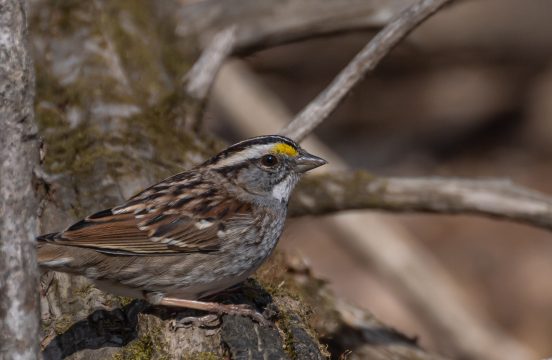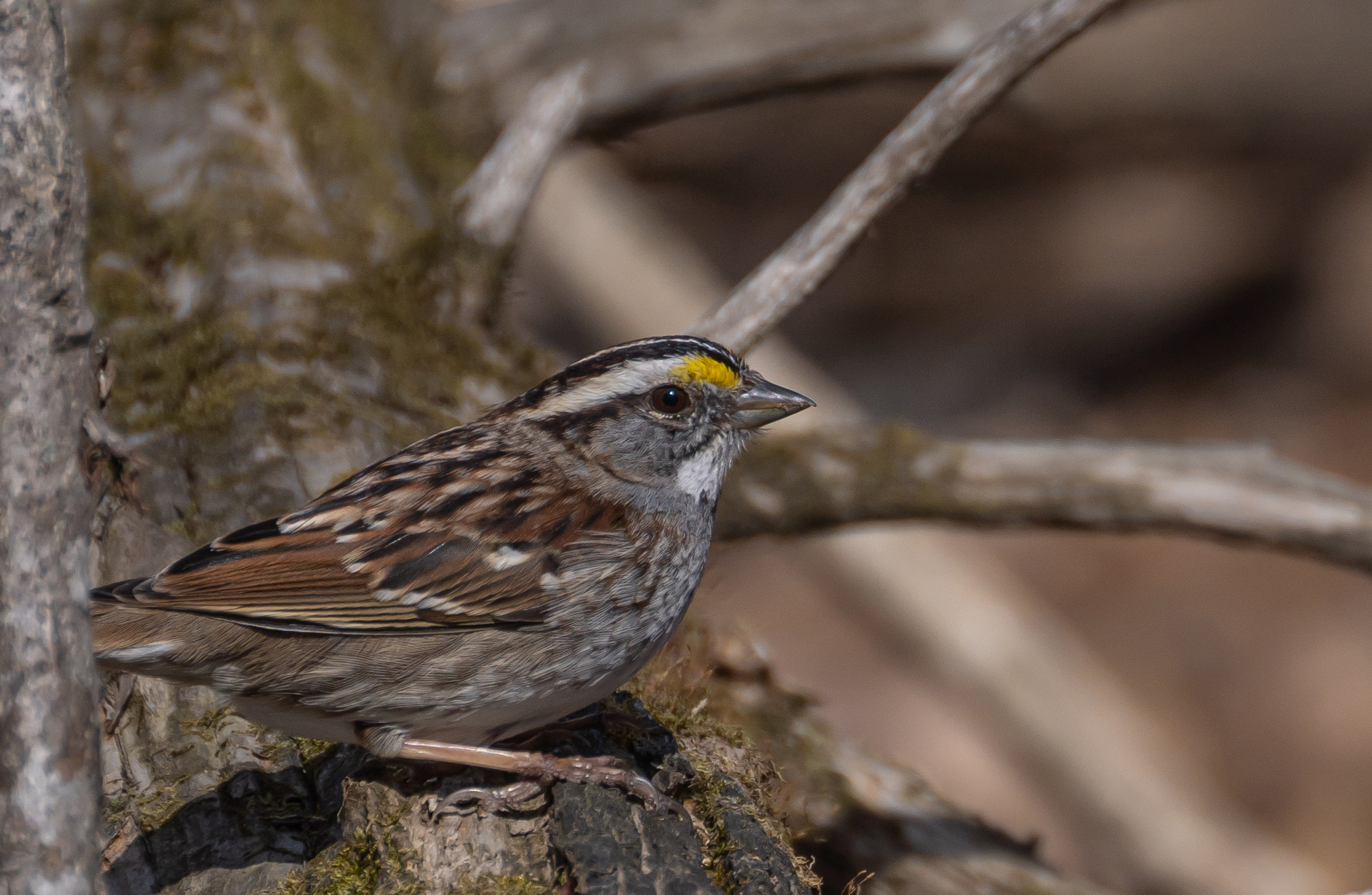Bird of the week: white-throated sparrow
About: as their name suggests, white-throated Sparrows have a distinctive white throat, which stands out along with their yellow “eyebrows” and white head stripes against their brown and gray body. However, some birds have tan head stripes instead of white stripes. They are a common feeder visitor and eat many kinds of seed.
Where to find this bird: when they migrate through Appleton, look for them by the Slug Garden and the shrubby area by the stairway behind Sage Hall.
When to find this bird: they can be found year-round, but most migrate through Appleton during April – May and September – early December
Fun fact: the two different color morphs of white crowned sparrow – the white-striped and tan crowned – mate almost exclusively with birds of the other morph. This means that even though the two morphs look different, they are closely related.

eBird – it’s the birding world’s social media
If asked what my most-used app is, I would have to say that it is eBird. Launched in 2002 by the Cornell Lab of Ornithology, eBird has become the largest bird database in the world, with over one billion sightings logged from around the globe. It is the social media of the birding world, but instead of memes, stories and the like, it consists only of bird sightings, photos and recordings. You don’t follow other birders, but instead you can see what’s been seen where and when by whom.
Of course, it is technically not social media, but actually a very user-friendly citizens’-science database, meaning that anyone can contribute sightings. This data comes from over 900 thousand users, who can collect more data than any traditional scientific data collection method could. Scientists use this wealth of data regularly to estimate bird population trends, identify important bird areas, and much more. In addition to keeping track of bird sightings, eBird collects media for the Macaulay Library, which is a library of 50 million bird photos and 1 million bird recordings. The recordings are used, among other things, to power the free Merlin bird ID app, which can identify bird photos and recordings obtained by users using AI, making bird ID accessible to everyone. eBird also allows users to access detailed range maps for every species in the world and research locations known to be good for birding, called hotspots. The eBird app also allows users to easily explore recent bird sightings in their area, allowing them to make more informed decisions on where to bird.
Like most new technologies, eBird gets pushback sometimes for gamifying birding as it lets birders, like myself, keep track of all our birding stats, like how many birds I have seen this year and how many species I’ve seen on the Lawrence campus. I can even see how my stats compare to other birders. Before eBird, birders did competitive (or non-competitive) listing like this, so eBird just allows us to keep track of our sightings in a more streamlined, detailed and public way than in the “old days” of birding notebooks and spreadsheets. It also allows me to go back in my records efficiently and see how many Cackling Geese I’ve logged over the years – answer: I’ve logged 237,190 individual Cackling Geese into eBird. Granted, I have gotten hooked on eBird, as I log checklists – a list of species of birds that I see within a certain time window along with the number of individuals for each species – multiple times a day, and check the app daily to see what species are being reported in my area, so my view is probably a bit biased. Regardless if eBird has gamified birding, it has made birding more accessible to people around the world and is contributing to important bird research daily. Next time you start scrolling through Facebook, just imagine what it would be like to be scrolling through eBird sightings instead. At least, I’d enjoy it more, but I will admit, the Facebook birding meme group is pretty good, too.
Have questions for our birder? Ask them here!

